Merlin, STRIX and Bussard were, like EFOG-M and Polyphem, a class of weapons that started development in the eighties. But matured just in time for the end of the Cold War, running out of enemy shortly before running out of cash.
Each was based on the fundamental assumption, also like EFOG-M and Polyphem, that NATO forces would be massively outnumbered by Warsaw Pact armoured forces and that some way of evening the odds was required.
They also assumed that tank developers would continue to concentrate protection towards the front of the vehicle, not the top.
Merlin, STRIX and Bussard were Non-Line of Sight (NLOS) top attack anti-armour weapons that were launched from in-service mortars (81 mm for the former and 120 mm for the others)
81 mm — Merlin
The Merlin project started as a private venture study by BAe in 1981.
A formal project definition study started in 1983 when the MoD contributed £11m.
Firing using inert rounds commenced in 1989 against stationary and moving targets, a total of 158 rounds were completed.
These tests confirmed Merlin was a workable system with a better than 90% success rate in all weathers and day or night, out to a maximum range of 4,200m.
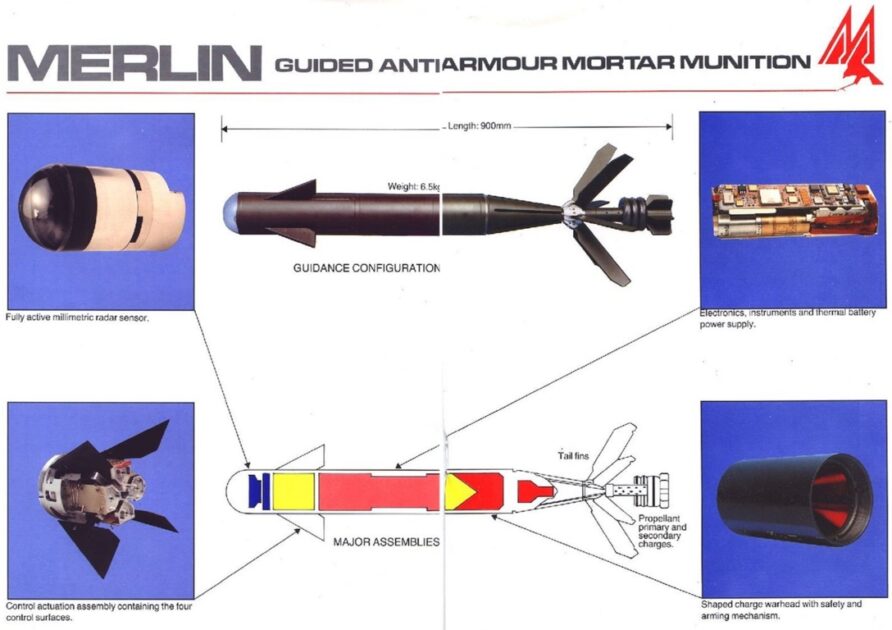
Merlin was an 81 mm calibre 6.5 kg weapon that could be fired from the in-service L16 mortar.
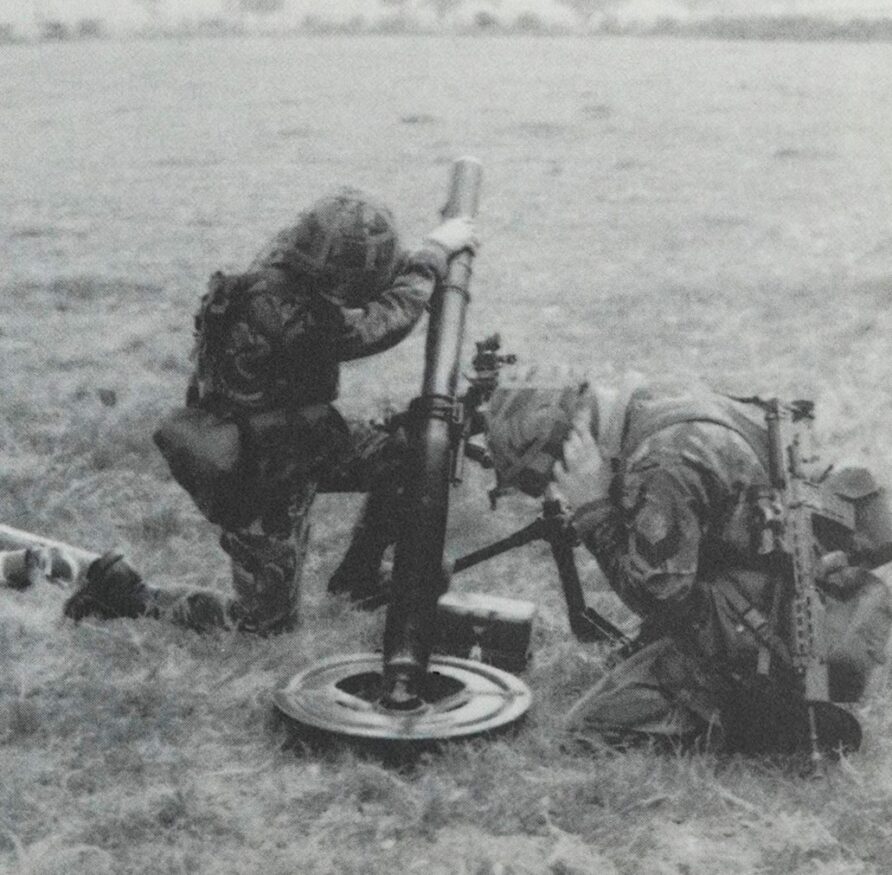
Upon launch, Merlin flew a normal ballistic trajectory until it reached its apogee, at which point the guidance system searched for targets across a 300m × 300m area using its millimetric wave radar.
Six fins and four canards would be deployed to generate a 60-degree final trajectory and final guidance to the target, even if the target is moving.
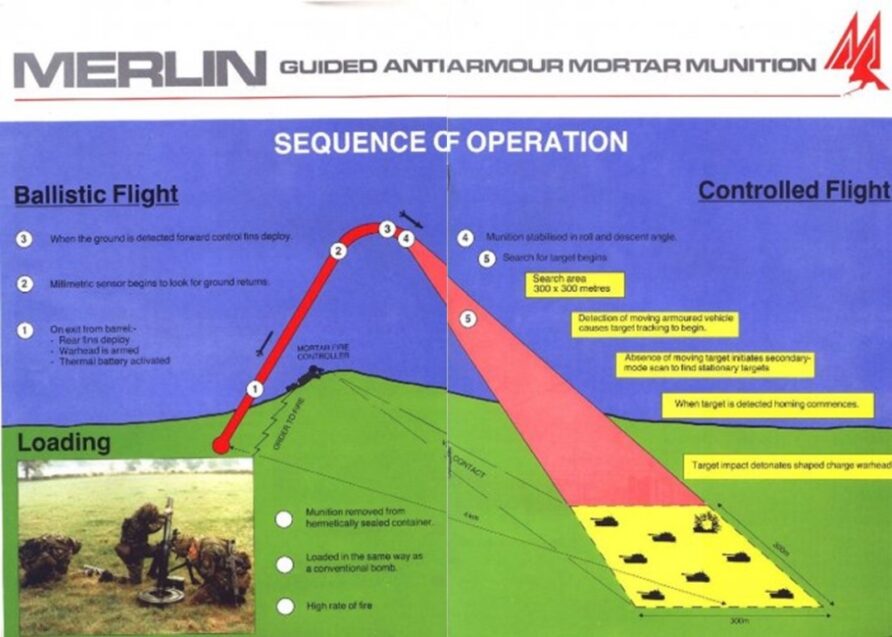
If no moving targets were acquired, the guidance system would prioritise stationary targets.
Despite test success, and despite it being projected to cost no more than a Milan ATGW, no formal requirement existed and Merlin did not enter service.
120mm — Bussard (Buzzard)
Dhiel started the development of the Bussard (Buzzard) guided mortar bomb at the end of 1975.
Although the concept of operation was similar to Merlin, it used the larger 120 mm mortar as the launch weapon.
Bussard also differed from Merlin with the selected guidance technology.
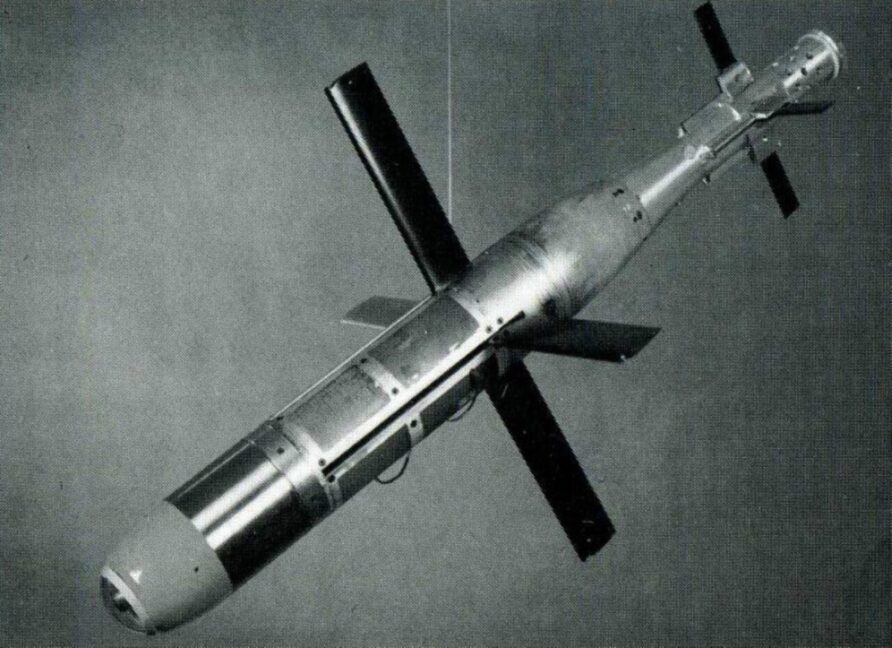
Instead of a somewhat autonomous or ‘fire and forget’ engagement sequence of Merlin, Bussard used a laser homing seeker, requiring someone to designate the target.
Designators could be ground-based or airborne.
Diehl also proposed several alternative guidance options.
Testing confirmed the accuracy of the system in 1983, but it did not enter service.
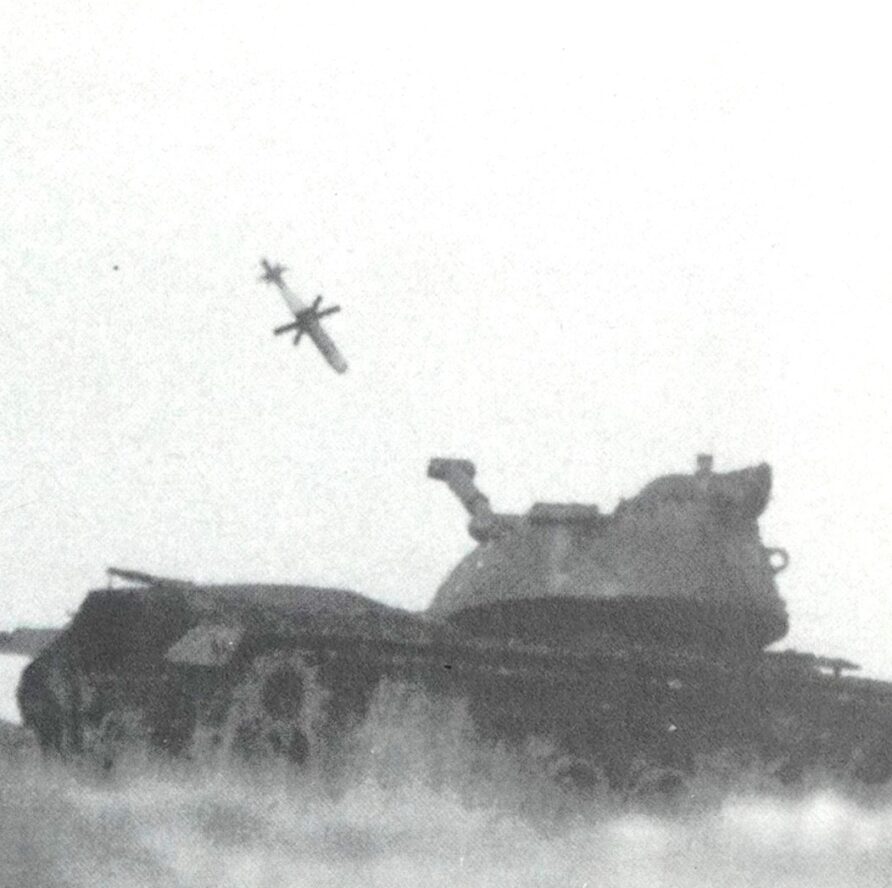
Many years later, in 1999, Bussard was selected as one of the munitions for the US Army Precision Guided Mortar Munition (PGMM) project. The study project drew on the Russian experience in Chechnya and noted that a single precision-guided mortar bomb could defeat a small protected target compared to hundreds for an unguided bomb.
The Bussard airframe was modified to meet the project requirements, but it was not, in the end, selected.
120mm — STRIX
Pansarsprängvinggranat m/94 STRIX (Screech owl) is the final of the trio and the only one who had any kind of meaningful service life.
Like Bussard, it used a 120 mm mortar, but instead of laser homing, it used a passive imaging infra-red seeker to home in on the higher temperature parts of a vehicle, the engine for example.
FFV Ordnance and Saab Missile Systems started the development of STRIX in 1983, with the first firing taking place in 1988, and entering service in 1994.
The final development was funded by the Swedish Defence Material Administration for SEK300 million.
The normal range was 4.5 km but using a sustainer motor kit, the maximum range was 7,500m, nearly doubling the effective range of Merlin, although it had a smaller acquisition area of 150m2
Before reading on, would you mind if I brought this to your attention?
Think Defence is a hobby, a serious hobby, but a hobby nonetheless.
I want to avoid charging for content, but hosting fees, software subscriptions and other services add up, so to help me keep the show on the road, I ask that you support the site in any way you can. It is hugely appreciated.
Advertising
You might see Google adverts depending on where you are on the site, please click one if it interests you. I know they can be annoying, but they are the one thing that returns the most.
Make a Donation
Donations can be made at a third-party site called Ko_fi.

Think Defence Merch
Everything from a Brimstone sticker to a Bailey Bridge duvet cover, pop over to the Think Defence Merchandise Store at Red Bubble.
Some might be marked as ‘mature content’ because it is a firearm!
Affiliate Links
Amazon and the occasional product link might appear in the content, you know the drill, I get a small cut if you go on to make a purchase
Summary
At the risk of being repetitive, like EFOG-M and Polyphem, if their time had come, I don’t doubt they would have been effective.
Merlin was certainly more ambitious than either STRIX or Bussard, the smaller diameter meant all the guidance systems had to be squeezed into a significantly smaller body, but the autonomous nature of that guidance system set it apart.
Like Brimstone, it used a millimetric wave radar and target recognition system. Launched into a ‘target box’, the round did the rest, the mortar crew could be away on their toes before it hit. Using radar meant it was significantly more robust against countermeasures.
STRIX was also autonomous but used a passive IR guidance system. Modern obscurants are designed to conceal targets and counter IR homing guidance.
In contrast, Bussard used a home-on laser guidance system, modern laser detectors and obscurants are also designed to counter these, and someone somewhere has to designate the target.
Of the three, therefore, Merlin was not only the most technically challenging but also, one that had the most longevity against modern opponents.
All moot, of course, it never entered service.
But what about today?
Could you take a Brimstone tri-mode seeker and attach it to the front of an 81 mm or 120 mm mortar bomb?
Brimstone has a diameter of 180 mm, so without some expensive engineering work, it seems unlikely.
And why not just use Brimstone anyway?
The main advantage of a weapon like Merlin is that it would have resided in an Infantry Battalion mortar platoon, directly under the control of the battalion commander. As of today, no current British Infantry Battalion has organic autonomous precision guided non-line of sight weapons, just plain mortar bombs and a radio link.
This might not be a bad thing, but worth pointing out.
Add these to the list of interesting Cold War weapons that were a good idea, but didn’t endure.
Small loitering munitions are probably the current version of the precision-guided anti-armour mortar bomb.
Read more (Affiliate Link)

Discover more from Think Defence
Subscribe to get the latest posts sent to your email.


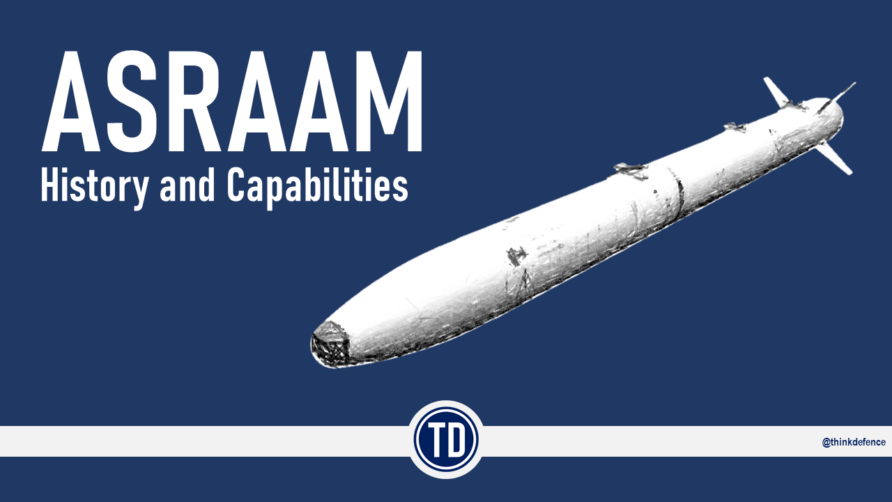
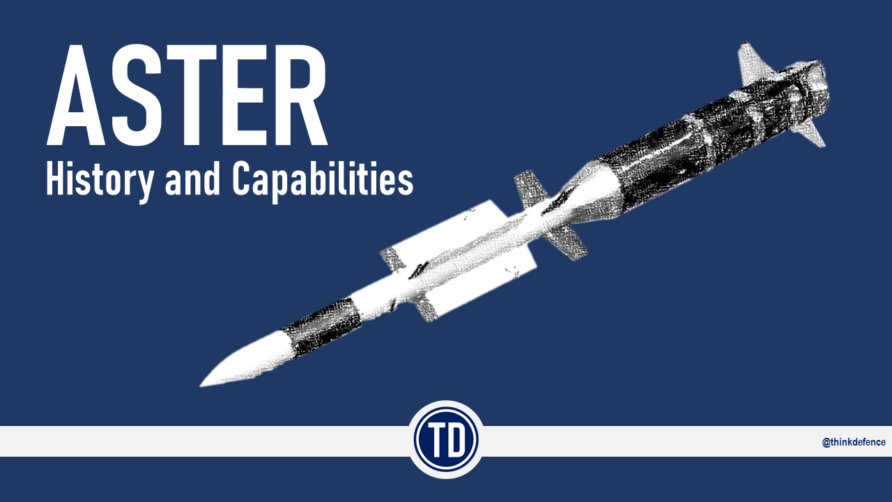
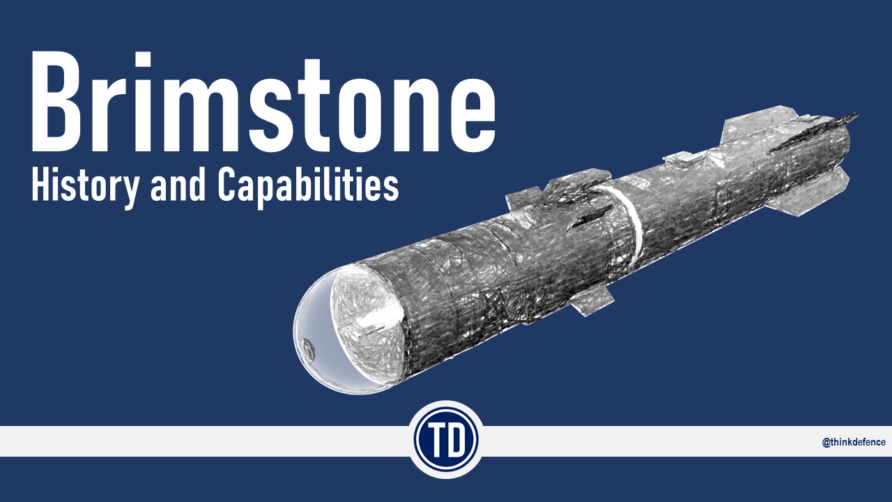
Is there a Brimstone "tri-mode" seeker? I thought it was bi-modal only – active MMW radar, or semi-active laser homing?
MERLIN was being looked for integration on Italian 120mm mortars. I seem to remember successful test firings, but not completely sure after all this time?
@ Jed.
Brimstone has three guidance packages!
1. Millimeter Wave Radar
2. Semi-Active Laser
3. Inertial Navigation
Nothing like giving us grunts some better anti-armour capability!!!!
could you stick something like this on the end of a grad rocket, let it go at the end of the parabolic arc?